
Vampire bats, members of the subfamily Desmodontinae, are leaf-nosed bats currently found in Central and South America. Their food source is the blood of other animals, a dietary trait called hematophagy. Three extant bat species feed solely on blood: the common vampire bat, the hairy-legged vampire bat, and the white-winged vampire bat. Two extinct species of the genus Desmodus have been found in North America.

The New World leaf-nosed bats (Phyllostomidae) are bats found from southern North America to South America, specifically from the Southwest United States to northern Argentina. They are ecologically the most varied and diverse family within the order Chiroptera. Most species are insectivorous, but the phyllostomid bats include within their number true predatory species and frugivores. For example, the spectral bat, the largest bat in the Americas, eats vertebrate prey, including small, dove-sized birds. Members of this family have evolved to use food groups such as fruit, nectar, pollen, insects, frogs, other bats, and small vertebrates, and in the case of the vampire bats, even blood.

The spectral bat, also called the great false vampire bat, great spectral bat, American false vampire bat or Linnaeus's false vampire bat, is a large, carnivorous leaf-nosed bat found in Mexico, Central America, and South America. It is the only member of the genus Vampyrum; its closest living relative is the big-eared woolly bat. It is the largest bat species in the New World, as well as the largest carnivorous bat: its wingspan is 0.7–1.0 m (2.3–3.3 ft). It has a robust skull and teeth, with which it delivers a powerful bite to kill its prey. Birds are frequent prey items, though it may also consume rodents, insects, and other bats.

Andersen's fruit-eating bat is a bat species found in South America.

The common big-eared bat is a bat species from South and Central America. It is a member of the family Phyllostomidae.

The tent-making bat is an American leaf-nosed bat (Phyllostomidae) found in lowland forests of Central and South America. This medium-sized bat has a gray coat with a pale white stripe running down the middle of the back. Its face is characterized by a fleshy noseleaf and four white stripes. Primarily a frugivore, it may supplement its diet with insects, flower parts, pollen, and nectar. Its common name comes from its curious behavior of constructing tents out of large, fan-shaped leaves. These roosts provide excellent protection from the tropical rains, and a single tent roost may house several bats at once. This bat is quite common in its geographic range; hence, its conservation status is listed as Least Concern.

The bidentate yellow-eared bat is a species of bat in the family Phyllostomidae, native to South America. Formerly classified in the Vampyressa genus, phylogenetic analyses support its inclusion in Vampyriscus.

The great stripe-faced bat or stripe-faced vampire bat is a bat species found from southern Mexico to Bolivia and northwestern Brazil, as well as on Trinidad. The great stripe-faced bat is a frugivore. It is one of two species within the genus Vampyrodes the other being Vampyrodes major.

Micronycteris is a genus of leaf-nosed bats.
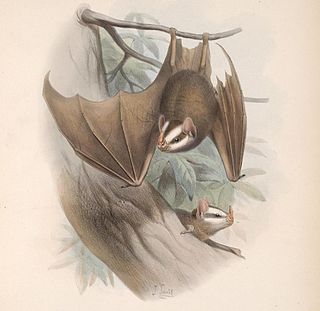
Chiroderma – big-eyed bats or white-lined bats – is a genus of leaf-nosed bat found in North America, Central America, and South America and the Lesser Antilles.
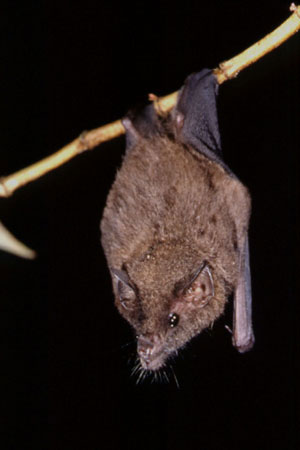
Anoura is a genus of leaf-nosed bats from Central and South America. Anoura members lack or have a short tail, and are nectarivorous bats of small to medium size among the Phyllostomidae.
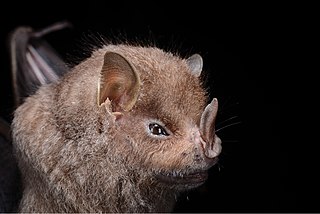
The Guadeloupe big-eyed bat is a species of bat in the family Phyllostomidae. It is found in Guadeloupe and Montserrat. It is threatened by habitat loss mostly because of Hurricane Hugo, which destroyed 90% of its population in 1989. The species may be locally extinct in some areas of Guadeloupe.
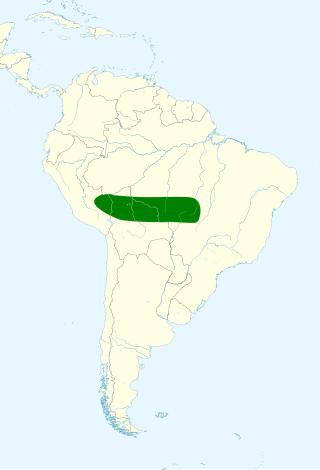
Behn's bat, Behn's big-eared bat, or Behn's graybeard bat is a species of bat in the family Phyllostomidae found in Brazil and Peru. It is known only from six specimens and is considered rare. It feeds on insects and small fruits.

Waterhouse's leaf-nosed bat is a species of big-eared bat in the family Phyllostomidae. It is found in the Greater Antilles in the Cayman Islands, Cuba, Hispaniola and Jamaica, as well as Mexico south to Guatemala.

Vampyriscus is a genus of bats in the family Phyllostomidae, the leaf-nosed bats.
Micronycteris giovanniae is a species of leaf-nosed bat found in Ecuador.
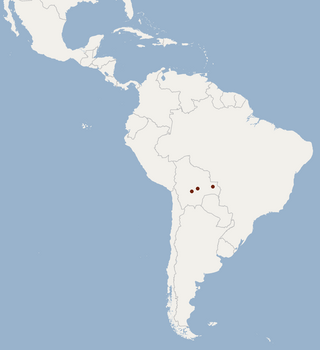
Yates's big-eared bat is a species of leaf-nosed bat found in Bolivia.
Glyphonycterinae is a subfamily of leaf-nosed bats. It contains the following genera:














